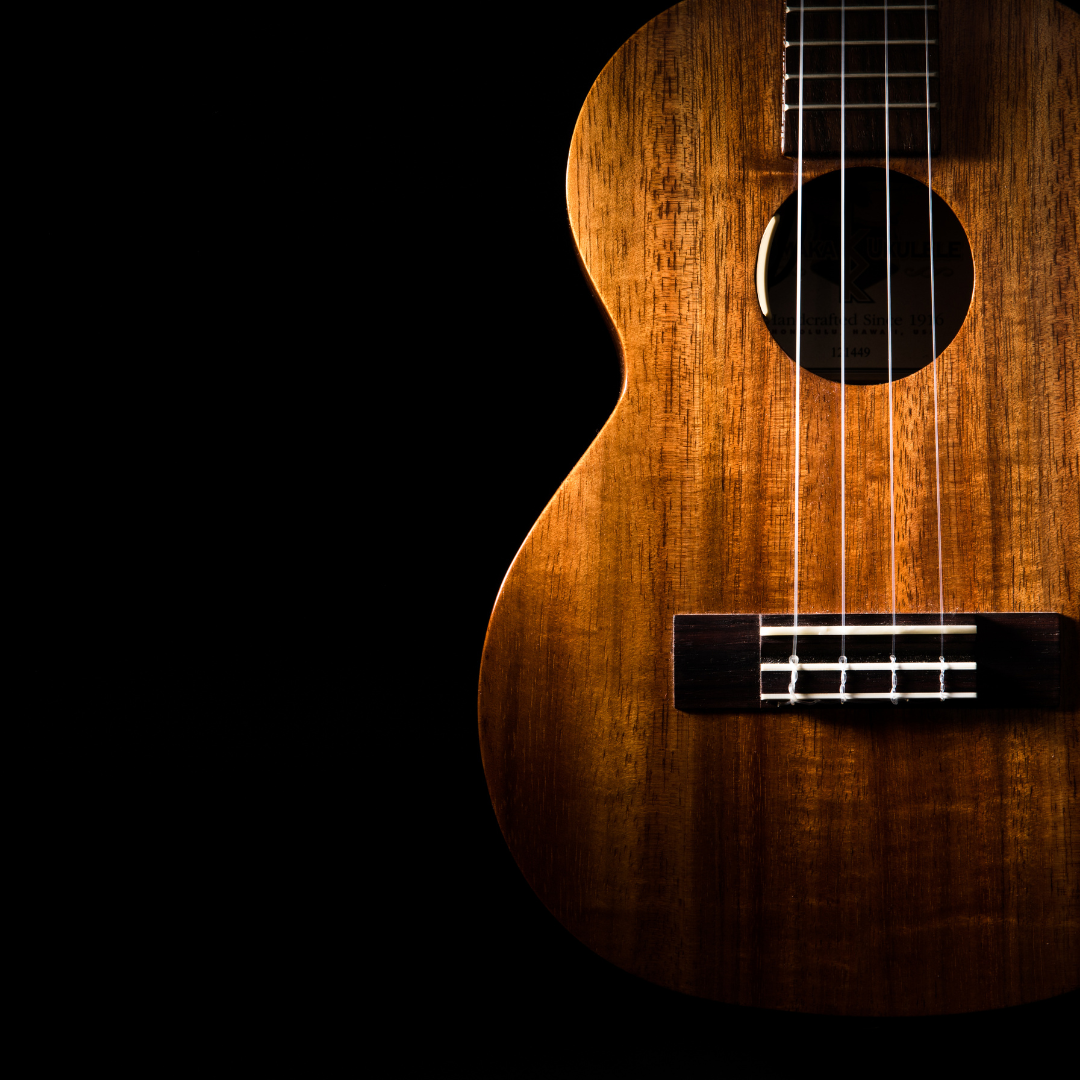
The Origins and Evolution of the 'Ukulele
Share
The 'ukulele, with its cheerful melodies and infectious charm, has captivated hearts around the globe. Yet, the journey of this diminutive instrument from its Portuguese roots to becoming a symbol of Hawaiian culture and a global musical sensation is a nuanced tale that unfolds over centuries. In this comprehensive exploration, let's delve deeper into the intricate details of the 'ukulele's origins and its evolution through time.
-
Portuguese Pioneers: The Braguinha's Migration to Madeira
The 'ukulele's lineage can be traced back to the island of Madeira, Portugal, in the 19th century. Portuguese immigrants, drawn to the sugarcane plantations, brought with them an instrument known as the braguinha or machete. Characterized by a small, guitar-like frame and four strings, this precursor laid the foundation for the 'ukulele's distinctive design and musical character.
-
Hawaiian Harmony: 'Ukulele's Arrival and Cultural Integration
The 'ukulele found its way to the shores of Hawai'i through these Portuguese immigrants, marking the beginning of a transformative cultural fusion. Embraced by the Hawaiians, the instrument underwent modifications, including changes in size and stringing. Its popularity soared, becoming a vital element of traditional Hawaiian music and dance. The name " 'ukulele" emerged, reflecting the instrument's playful and nimble nature. 'Ukulele itself translates to "jumping flea" in Hawaiian, possibly a nod to the rapid finger movements of early players.
-
Royal Endorsement: King Kalākaua and the 'Ukulele Renaissance
King Kalākaua, a staunch supporter of the arts, played a pivotal role in elevating the 'ukulele's status. He brought it to the royal courts and contributed to its rise in popularity among both locals and visitors. The 'ukulele became synonymous with the joyful, laid-back sound of Hawaiian music. His patronage helped integrate the instrument into royal court performances, solidifying its cultural significance. As the 'ukulele resonated through the halls of Hawaiian palaces, it gained esteem and recognition, both locally and internationally.
-
Jazz Age Marvel: 'Ukulele's Dance Through the Roaring Twenties
The 'ukulele experienced a meteoric rise during the Jazz Age, capturing the exuberance of the Roaring Twenties. Its compact size and joyful timbre made it a favorite for vaudeville acts, where it became an iconic symbol of the era's carefree spirit. Hollywood embraced the 'ukulele, featuring it in films and performances, catapulting it into the hearts of audiences across the United States and beyond.
-
Postwar Decline and Mid-Century Revival
Despite a decline in popularity post-Jazz Age, the 'ukulele experienced a resurgence in the mid-20th century. The renewed interest in Hawaiian music and culture contributed to its revival. The 'ukulele found a place in the folk music movement and became an emblem of simplicity and accessibility, attracting players of all ages and skill levels.
-
Contemporary Renaissance: 'Ukulele's Global Reawakening
In recent decades, the 'ukulele has undergone a contemporary renaissance, transcending genre boundaries and making its mark in mainstream music. Its versatility and approachability have made it a favorite for beginners and professional musicians alike. 'Ukulele festivals, communities, and social media have further fueled its resurgence, connecting players from every corner of the world.
As we strum the strings of our 'ukuleles, we become part of a centuries-old legacy that transcends borders and cultures. The 'ukulele's journey, from its humble beginnings on the Portuguese island of Madeira to becoming a global musical phenomenon, is a testament to its enduring appeal. So, let us continue to pluck, strum, and compose, carrying forward the rich tapestry of history woven into the vibrant chords and melodies of the 'ukulele.